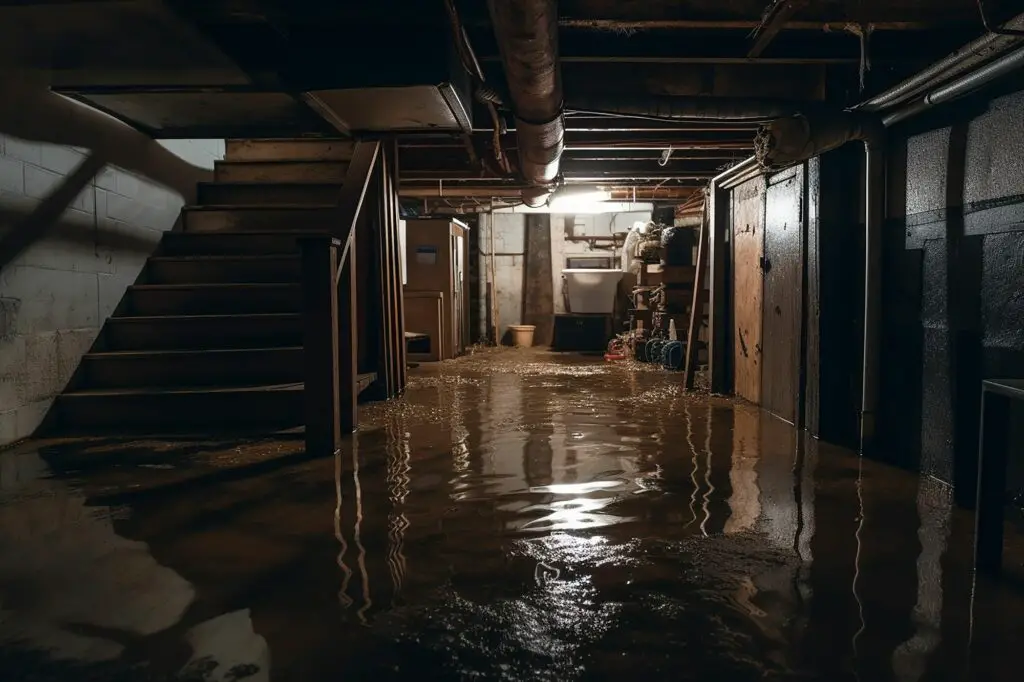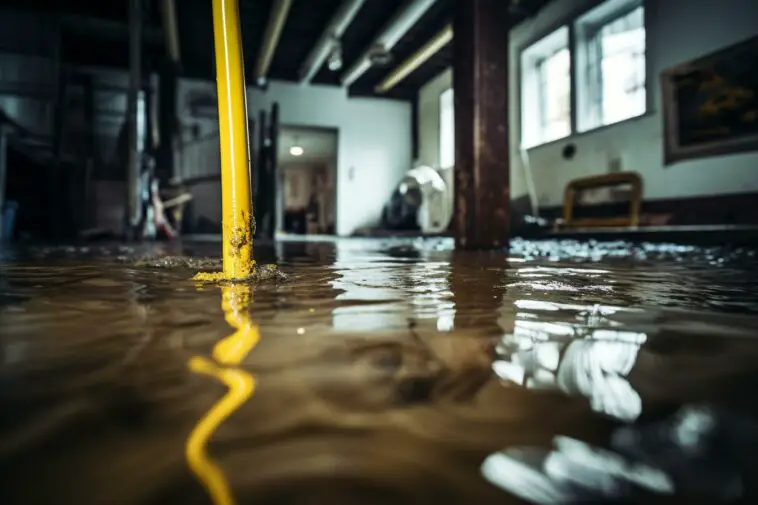You’ve just discovered your basement turned into an unwelcome indoor pool. This unexpected discovery can set off a wave of panic. But don’t worry; you’re not alone. A lot of homeowners encounter this problem now and then, but there’s a clear path to facing such chaos.
This guide is your lifeline, offering clear, step-by-step advice on how to tackle this challenge head-on. From identifying the root cause of the flood to selecting the right equipment, you’ll learn how to transform your damp, chaotic basement back into the safe, dry space it once was.
So, let’s roll up our sleeves and get to work. It’s time to reclaim your basement from the clutches of unwanted water.
Choosing The Right Equipment For Water Removal
When choosing equipment, make sure you consider the extent of flooding. If the situation is worse than expected, a submersible pump might be your best option.
A submersible water pump is ideal for significant water accumulation. These pumps are available in diverse sizes and capacities. It’s imperative to match the pump’s capabilities with the severity of your situation.
For less severe cases, a wet-dry vacuum might suffice. This versatile tool can handle smaller volumes of water and is easier to maneuver.
Furthermore, make sure you have a sturdy, lengthy hose for effective water discharge. This allows you to address the flooding efficiently and minimize potential water damage to your basement.
Preparing Your Basement For Water Extraction
Safety is crucial when prepping your basement for extraction. First, ensure all electrical power to the affected area is disconnected to prevent electrical hazards. This precaution is essential, particularly in areas where water and electricity might intersect.
Before the extraction process, remove any valuable items or hazardous materials from the area to avoid damage or dangerous interactions. This step ensures you can proceed with the task without unnecessary risks.
Wear protective gear, such as waterproof boots and sturdy gloves, to keep yourself protected against potential contaminants, like bacteria and other pathogens.

Hiring A Pro
If your pump malfunctions or requires a pro, consider hiring a reliable sump pump repair company near Indianapolis or your local area.
Start by researching local companies with solid reputations. Look for businesses with a track record of prompt service and positive customer feedback. Online reviews and ratings can be a great resource in evaluating the quality of service provided.
Additionally, ensure that the company you choose offers specialized sump pump repair services and employs certified technicians. Don’t hesitate to inquire about their experience with basement flooding scenarios similar to yours.
Choosing a reputable and experienced service provider will not only address your immediate repair needs but also offer long-term solutions to prevent future issues.
Executing The Pumping Process Effectively
Position your submersible pump at the lowest point of the basement, ensuring it’s fully submerged. Direct the discharge hose to an appropriate drainage area, such as a storm drain or a gently sloping part of your yard, where it won’t cause additional problems.
It’s crucial to monitor the pump’s performance continuously, adjusting its position if necessary to optimize water removal. With this, you’ll be able to remove surface water and minimize the residual moisture that could lead to further issues.
Ensuring Thorough Drying And Dehumidification
Once you’ve extracted all the water from your basement, the next thing to do is dry and dehumidify the area thoroughly. This is especially crucial in preventing mold growth, which can compromise not only the integrity of your home but also your family’s health.
Use fans and dehumidifiers to circulate air, enhance evaporation, and extract residual moisture from the air. It’s essential to maintain constant vigilance during this phase, regularly checking for damp spots or hidden moisture, particularly in porous materials and hard-to-reach areas.
A completely dry environment is vital for safeguarding your home against long-term damage and maintaining a healthy living space.
Cleaning And Sanitizing After Water Removal
Make sure your basement is clean and hygienic after pumping the water out of your basement. Start by discarding any items that are beyond salvage. For surfaces, use a mix of disinfectants to eliminate harmful bacteria and pathogens brought by floodwaters.
Also, keep an eye on corners and hidden spaces where moisture might linger. This process restores the cleanliness of your basement and protects your health by preventing the growth of mold and mildew.
Preventing Future Basement Flooding
Proactive measures are essential in preventing future basement flooding. Regularly inspect your home’s foundation for cracks or leaks, as these can be gateways for water entry.
Then, clean gutters and downspouts occasionally to prevent blockages causing water overflow and seepage. Also, consider installing a sump pump, an effective tool for removing accumulated water. Keep this pump in good condition to ensure it’s perfectly working during flooding.
Final Thoughts
Dealing with a flooded basement can be daunting, but with the right approach, it’s a manageable task. By understanding the cause, choosing the right equipment, and following these step-by-step instructions, you can effectively pump water out of your basement.
Remember to focus on safety, thorough drying, and preventative measures to protect your home from future flooding. With this guide, you’re now equipped to handle such situations with confidence and efficiency.





